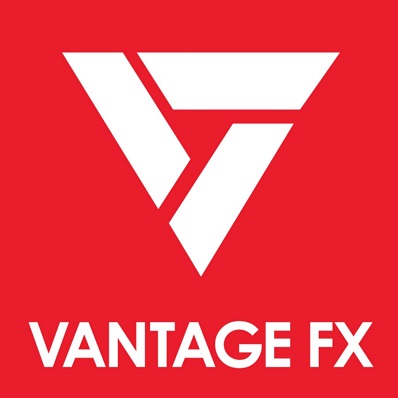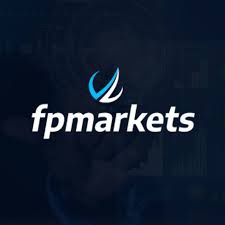What is CFD trading?
First of all, CFD stands for Contract for Difference. It is a contract between the buyer and a seller of a particular asset. The contract requires that the seller pay the buyer the difference between the currency value of an asset and the value of the asset when it is settled. The difference can be positive or negative; that is, it can be a profit or a loss. If the difference is positive, then the seller will pay the buyer. If the difference is negative, on the other hand, then the buyer will pay the seller.
The Best CFD Brokers in Australia
Those involved in CFD trading Australia can use CFD on series of assets, like:
- Individual stocks
- Stock market Indices
- Cryptocurrency
- Forex
- Futures
CFD for easier speculations
CFDs are derivative investments. They allow the trader to speculate on the price movement of an asset, be it shares, Forex, or commodities. The trader will make a profit if the price of the asset moves in the direction speculated in the contract. CFD trading means the trader will not have to own the asset. Instead, he owns the CFD contract.
When opening a CFD trade, the trader can decide to go long or go short. When a trader goes long, it means he is buying the asset. When he goes short, it means he is selling the asset. When a trader goes long, he is expecting the value of the asset to increase. The reverse is the case when the trader goes short. If the speculation of the trader goes as planned, then the seller (or broker) will pay him the difference in value.
If he is not correct, on the other hand, the buyer (trader) will pay the seller (broker) the difference in value. This means that the trader owes the difference if he is incorrect. There is something called leverage. Leverage is a two-edged sword. It can make you win much or lose much. With leverage, you can end up losing more than your capital if you are incorrect in your speculation.
Currencies are the most common forms of CFDs in Australia. Aside from currencies, Australian CFD traders also venture into commodities trading. Examples of commodities traded in CFD in Australia are:
- Wheat
- Gold
- Oil
- Iron ore
When you buy shares, it means you own the asset. That means you own a part of the company. A shareholder will get his cut in the profit made by the company as the value of the share grows. As the number of shares you get increases, you can even get the right to vote in the company. So, selling the shares means that you are selling off your ownership in that company.
This is never the case with CFD trading. When you buy shares in CFD trading, you do not own the shares. You will only own the contract that the CFD provider offers. You are just a speculator on price differences in CFD trading. CFD’s benefits over the actual trading are also noteworthy. In conclusion, a shares CFD trader is only a speculator on whether or not the value of that share will rise or fall without trading or owning the shares. The example above is the same in all cases of CFD trading. Some think CFD trading is like a bet on the price of an asset.
Margin and leverage in CFD trading
To open a CFD trade, you will only need to invest a small percentage of your capital or trade’s value. The amount you will need to invest is called the margin requirement. The value varies, depending on the broker. At times, it can be just 5%. It can even be less. We can simply refer to the margin as the deposit. If your total balance is $10,000, for example, and you want to use a margin of 5%, it means you will be using $500 to open that trade.
Even at that, 100% of the profit from the trade will come to you. This is one of the many CFD’s benefits. If you are trading with leverage, the profit can increase tremendously. The loss can also increase a great deal if you lose a trade using leverage.
In the case you lose while trading with CFD, you will have to pay the broker or CFD provider for the loss. This means that your account balance will reduce by 5%. The loss is aside from the commission that the CFD provider can charge you. The commission differs from one broker to another. The best CFD trading platform will not charge you much in the form of commission.
Stop-loss in CFD trading
You can minimize the loss in CFD trading using a stop-loss. If the price hits your stop-loss, the trade will close automatically so that you do not lose more money than is necessary. Some CFD traders do trade CFD without using a stop loss, but this is not the best idea. CFD trading is risky and you need to set the stop loss to enable you to lower the risk you are exposed to.
CFD trading benefits
We mentioned some benefits of CFD trading above. We will focus on more benefits in this section of the write-up.
- Potential for big profit: CFD trading can enable you to make a lot of profit. This is because CFD trading will give you access to the use of leverage. Leverage will help to increase the amount you can make as a profit since it enables you to hold a big trading position with a small amount of money. As a result of this, you can make much profit using your small investment.
- Protection against loss: If there are indications that the value of the stock you own will fall in the future, you can decide to offset the loss to your portfolio’s value via CFDs as against selling the shares.
- Commodities: You can use CFD to speculate on the value of commodities of different types. Examples of such commodities are oil, silver, and gold.
- Access to a broad market: You can gain access to the global market and so many financial products via CFD trading. Traditional trading can rarely give you such access to the same platform as CFD trading. However, the platform where you open a CFD account can determine the number of assets you can access.
- Profit from losses: CFD trading allows you to make a profit when the value of the asset rises or falls. This is one advantage that you cannot find in many other methods of investment.
- No expiry: There is no expiry in CFD contracts at all and this is one other feature that makes it better than other forms of derivatives. So, you are free to end the contract anytime you feel like it, either in profit or loss.
Is CFD trading taxable in Australia?
There is no clarity in CFD trading taxing in Australia. The Australian Tax Office (ATO) does not give any specific instruction about this. As a result of this, many traders end up falling short of their tax obligations. The penalties of tax shortcomings can be crippling financially. In this section of the write-up, we will look into what the ATO has to say as regards tax on CFD trading.
First of all, we will break down tax classifications and also cover taxes on profit and loss.
Legal tax responsibility of a CFD trader
It can be difficult to understand what the paw says about tax on CFD trading because the tax law itself makes up thousands of pages. Factors that determine how much you will pay as tax as a CFD trader are:
- The amount you make as a profit in a tax year
- The amount you record as loss in a tax year
- The particular assets that you are trading
- Are you a trader or an investor
Some traders can also get an exemption from tax payments and the tax amount can go as high as 45%. Traders should avoid paying late or making wrong payments as this can attract heavy consequences, including a jail term.
As an investor, your tax on CFD trading will fall under the capital gain tax regime. If you are a CFD trader, on the other hand, your tax will fall under trading taxes. You will only be required to pay tax after paying off expenses any game you make as a trader will be classified as a normal taxable income. You can, however, claim any loss as tax deductions. Since CFD traders are seen as conducting business activities. Anyone trading CFD to make a profit will pay tax. Your frequency of trading activities and the volume you trade can determine how much you pay as tax.
How leverage affect CFD trading
What is leverage?
Leverage makes it possible for CFD traders to hold a large trading position with a very small amount of money. Thanks to leverage, it will be possible for someone that has about $100 in his trading account to control a position as large as $1000 or more. CFD is a leveraged product. It will help to magnify profit a great deal. Bear in mind also that leverage can magnify your losses in the same vein.
You can use leverage to profit a great deal from a small price movement. The information we provide below will further open your eyes to the role leverage plays in CFD trading.
How leverage works
Leverage works by using margin to provide the trader with increased exposure to a particular asset. When you use leverage, you will only be exposing just a fraction of your deposit or margin while the broker will provide the balance. The amount provided by the broker to make up the amount you need for opening that large position is called your total exposure. The ratio of your total exposure to your margin is called your leverage ratio.
If you have $100 as your trading capital; and you want to open a position that will cost say $1000, leverage will make this very easy for you. You will only be required to provide the $100, while the broker produces the rest. If your leverage ratio is 100:1, it means that you can use your $100 account balance to open a position of $10,000. This means that your profit will be very high. If you record a loss, on the other hand, the loss will depend on the size of the leverage.
Check below for a list of markets where leverage can be applied
- Indices
- Forex
- Cryptocurrencies
Leverage benefits
- Profit is magnified: The trader will only need to provide a fraction of the value of the trade and the broker will provide the remaining fund. The amount of profit will increase as the leverage ratio increases. At the same time, the loss incurred will increase by the same magnitude if the trade goes against you.
- Great trading opportunities: When you use leverage, it will help to free up your capital. You can commit such capital to another use or investment. The use of leverage also increases gearing opportunity, which is the ability to increase the available amount for investment.
- Shorting the market: When you use leverage to speculate on price movement, you will be able to benefit from both rising and falling markets. Benefiting from a rising market is called going long or buying while benefiting from a falling market is called going short or selling.
- The market is open 24 hours: There is a variation in trading hours from one market to another. Be that as it may, some other markets are available for 24 hours. Examples of such markets are cryptocurrency, Forex, and indices markets. Forex is usually not available during the weekend, but this is never the case with the cryptocurrency market.
Disadvantages of using leverage:
- It can magnify profit in the same magnitude at which it magnifies loss.
- There is no shareholder privilege.
- You can get margin calls from your broker informing you of the need to add more funds.
- You will have to pay funding charges.






